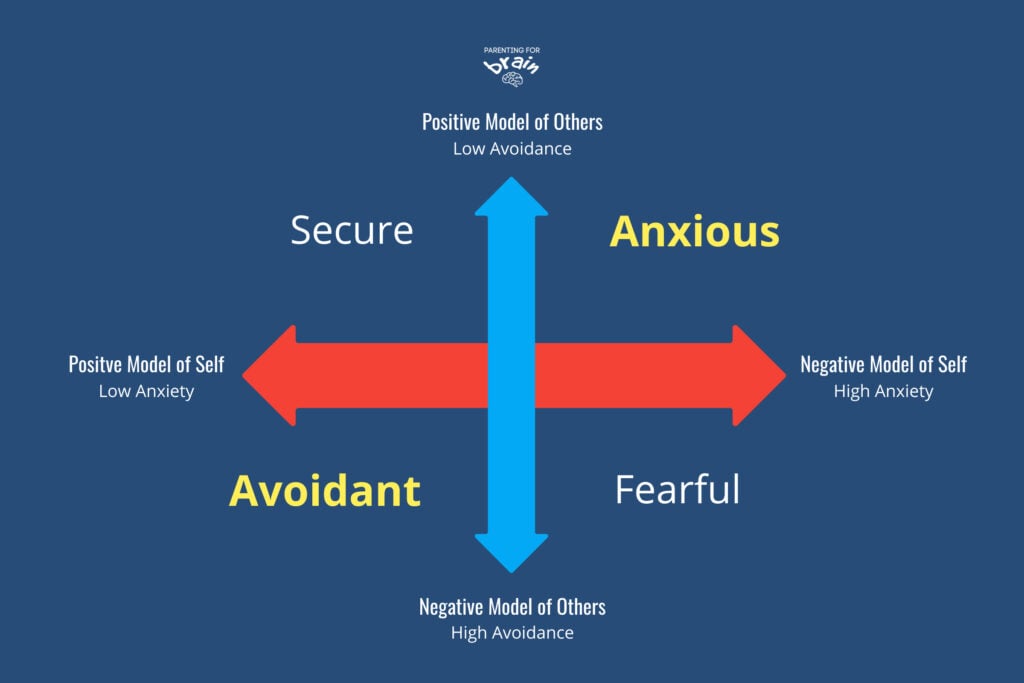
In the complex world of human relationships, understanding attachment styles can provide valuable insights into our behaviors and interactions. Among the various attachment styles, the avoidant attachment style stands out for its unique characteristics and challenges. This article delves into the nuances of avoidant attachment, offering a detailed exploration of its origins, manifestations, and implications for relationships.
Key Takeaways
- The avoidant attachment style is characterized by a strong desire for independence and self-reliance.
- Individuals with this attachment style often struggle with intimacy and emotional expression.
- Understanding and addressing avoidant attachment can lead to healthier, more fulfilling relationships.
What is Avoidant Attachment Style?
The avoidant attachment style is one of the four primary attachment styles identified in attachment theory, which was developed by John Bowlby and later expanded by Mary Ainsworth. This theory suggests that the way we bond with our caregivers in early childhood influences our relationships throughout life.
Characteristics of Avoidant Attachment
Individuals with an avoidant attachment style often exhibit the following traits:
- Independence: A strong preference for self-sufficiency and autonomy, often avoiding reliance on others.
- Emotional Distance: Difficulty in expressing emotions and reluctance to engage in deep emotional connections.
- Discomfort with Intimacy: Struggles with closeness and vulnerability, often keeping partners at arm’s length.
- Suppression of Feelings: Tendency to minimize or ignore emotional needs, both in themselves and others.
Origins of Avoidant Attachment Style
The roots of avoidant attachment can often be traced back to early childhood experiences. Children who develop this attachment style frequently have caregivers who are emotionally unavailable or dismissive. As a result, these children learn to rely on themselves and suppress their emotional needs, leading to the development of avoidant behaviors.
Research indicates that avoidant attachment is more prevalent in cultures that value independence and self-reliance. However, it’s important to note that attachment styles are not fixed and can evolve over time with self-awareness and effort.
Impact on Relationships
The avoidant attachment style can significantly impact romantic relationships and friendships. Individuals with this style may find it challenging to maintain close connections due to their discomfort with intimacy and emotional expression.
Challenges in Romantic Relationships
In romantic relationships, avoidantly attached individuals might:
- Struggle with Commitment: Avoid making long-term commitments due to fear of losing independence.
- Withdraw During Conflicts: Prefer to retreat or disengage rather than confront emotional disagreements.
- Resist Emotional Dependency: Avoid relying on partners for emotional support, leading to feelings of isolation.
Friendships and Social Interactions
In friendships, those with an avoidant attachment style may:

- Keep Relationships Superficial: Avoid deep, meaningful connections in favor of casual acquaintances.
- Prioritize Solitude: Choose solitude over social gatherings, finding comfort in being alone.
- Struggle with Vulnerability: Find it difficult to share personal thoughts and feelings with friends.
Overcoming Avoidant Attachment
While the avoidant attachment style can pose challenges, it’s possible to develop healthier relationship patterns through self-awareness and intentional effort. Here are some strategies for overcoming avoidant tendencies:
Developing Self-Awareness
Understanding one’s attachment style is the first step toward change. Reflecting on past experiences and identifying patterns in relationships can provide valuable insights into avoidant behaviors.
Building Emotional Intelligence

Improving emotional intelligence involves recognizing and understanding one’s own emotions, as well as those of others. This can lead to more empathetic interactions and a greater willingness to engage in emotional exchanges.
Seeking Professional Help
Therapy or counseling can be beneficial for individuals with avoidant attachment. A mental health professional can provide guidance and support in exploring underlying issues and developing healthier relationship skills.
The avoidant attachment style, while challenging, does not have to define one’s relationship experiences. By understanding its origins and manifestations, individuals can take proactive steps toward fostering more fulfilling connections. Whether through self-reflection, emotional growth, or professional guidance, change is possible, paving the way for healthier and more rewarding relationships.
Embracing vulnerability and seeking deeper connections may initially feel uncomfortable for those with an avoidant attachment style, but the rewards of emotional intimacy and mutual support in relationships are well worth the effort.



